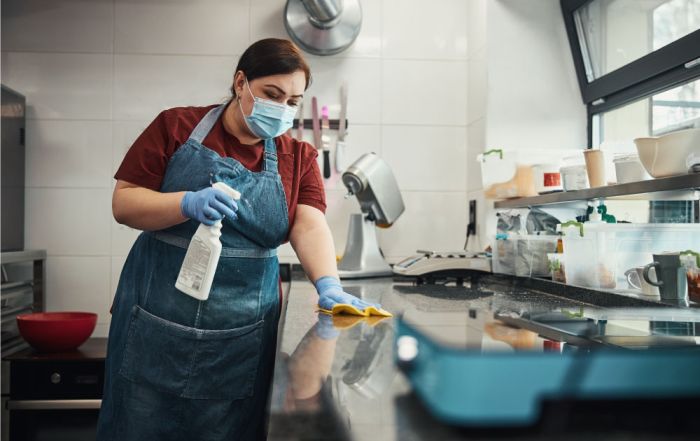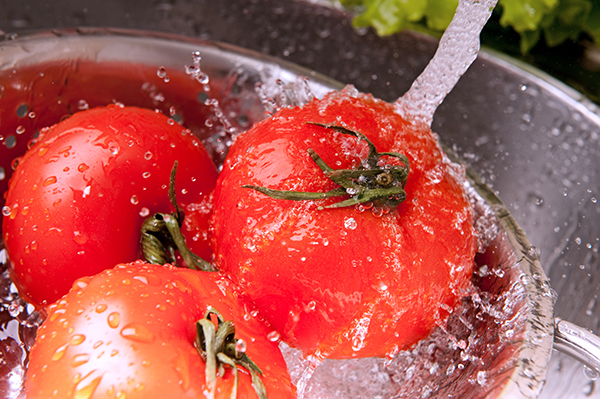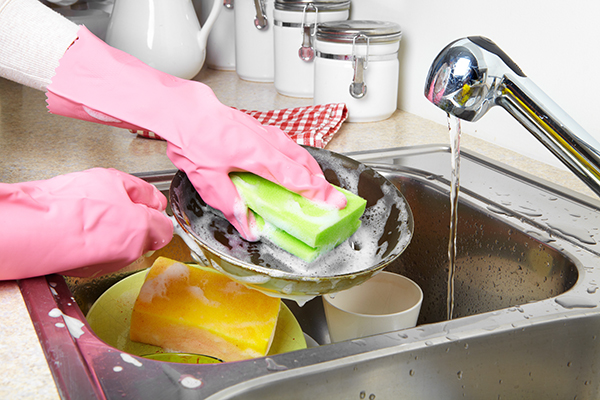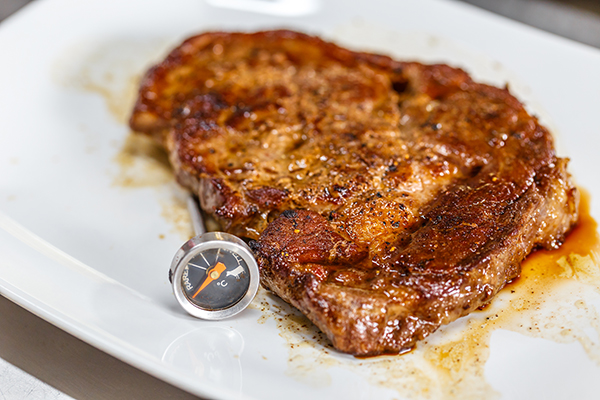When Temperatures Rise, Keep Food Safety Top of Mind
Summer brings a welcome increase in business for many restaurants, catering services, and event venues. It certainly did for the restaurant that I used to manage. With outdoor dining, festivals, weddings, and seasonal traffic, foodservice operations often experience their busiest stretch between Memorial Day and Labor Day. And the warmer weather creates ideal conditions for bacteria to grow quickly.
In our restaurant, it was even more of a challenge because our back kitchen was not air-conditioned. With the heat at the peak of summer often reaching the high 80s, our back kitchen would often top the 100-degree mark.
The Centers for Disease Control and Prevention does note that foodborne illness rates tend to spike during summer months. Keep in mind these rates are heavily influenced by consumer food preparation, and the average consumer does tend to prepare food outside more during the summer, which is away from refrigeration and water sources that are important for handwashing and general cleanliness. Anecdotally, it also seems that most tend to neglect to use thermometers when grilling or barbequing, which also contributes to this increase in foodborne illness rates.
That doesn’t mean that those of us in foodservice are off the hook. While the spike in foodborne illnesses during the summer is influenced by consumers, warmer temperatures create ideal conditions for bacteria to grow rapidly, and busy kitchens may find it harder to maintain strict time and temperature controls. And for those kitchens that have poor or no air-conditioning, like the back kitchen at the restaurant I managed, it is even more problematic. We also tend to see an increase in off-site and outdoor catering requests during the summer, which are always challenging for food safety, just as they are for the average person grilling outdoors at home. For foodservice operators, now is the time to double down on best practices to protect your customers.
…Maintaining proper temperatures is one of the most effective ways to prevent foodborne illness. Cold foods must be kept at 41°F (5°C) or below, while hot foods must stay at 135°F (57°C) or above.
Maintaining proper temperatures is one of the most effective ways to prevent foodborne illness. Cold foods must be kept at 41°F (5°C) or below, while hot foods must stay at 135°F (57°C) or above. Use calibrated thermometers regularly and ensure holding units and refrigeration equipment are functioning correctly, especially on those hot days when they’re under more strain.
Remind staff that the “danger zone” between 41°F and 135°F is where bacteria multiply rapidly. Even short exposures, such as during delivery, prepping, or buffet service, can be risky if not closely monitored.
If you’re offering outdoor dining or catering for off-site events, take extra precautions. Transport perishable items in insulated containers with ice packs or refrigeration units. At events, ensure you have safe food handling stations with handwashing access, and always cover food to protect it from insects and environmental contaminants.
With staff turnover often higher in summer, especially with seasonal hires, consistent hygiene practices can slip. Conduct brief, regular refreshers on handwashing procedures, glove use, and staying home when sick. Providing accessible handwashing stations and fully stocked hygiene supplies can go a long way in helping to improve proper food safety practices and helping employees to maintain compliance with identified standards.
Encourage a culture where safety comes first. I know this is something we seem to include in most of our blogs, but it is vital to ensuring proper food safety in your establishment. Empower your team to speak up if they see something concerning, and reward attention to detail.
Now is a great time to revisit your food safety plan and ensure staff are trained and procedures are up to date. Consider a mid-season check-in to evaluate what’s working and what might need adjustment during peak operations. Risk Nothing.
READ MORE POSTS
Welcome to National Food Safety Education Month!
In September of each year, we not only have the opportunity to celebrate Labor Day, but we also welcome National Food Safety Education Month! It is this time of the year when it is important to remember that Foodborne illnesses are still a major concern in the United States, although I am guessing many Americans don’t think about the safety of the food they eat as they go throughout their daily lives. The statistics show one in every six Americans will suffer from a foodborne illness each year, for a total of about 48 million cases each year.
Protecting Fresh Produce Post-Harvest, Integral to Safe Food
During the height of the summer, at least in the Midwest, farmers markets are in full swing and fresh produce is plentiful. Every backyard gardener is reaping the benefits of their work, with bountiful harvests of tomatoes and cucumbers. Everyone seems to have a neighbor who is trying to pawn off his or her over-production of cucumbers or summer squash during this time of year. When picking up that produce at the farmer’s market or from your neighbor down the street, have you ever given any thought to the microbial safety of it? Honestly, even in my position, it certainly is NOT the first thing that comes to my mind. But, earlier this month, I came across a news story out of Wisconsin discussing a Salmonella outbreak associated with shelled peas sold at a local farmers market. Who would have thought shelled peas would be impacted? The story noted, and it served as a great reminder, that most outbreaks associated with Salmonella in produce are due to mistakes made in handling or transportation of produce after harvesting.
Properly Cleaning and Sanitizing: The Right Chemical Mix to Maintain Ultimate Effectiveness
A few weeks ago, my family and I had the pleasure of setting sail on a cruise vacation. It is truly one of the only ways that I find that I am able to unplug from work and relax for a small spell. However, as I walked around the ship in our post-COVID world, I couldn’t help but admire all the extra cleaning steps the staff were undertaking to keep us all as safe as possible while in the middle of the ocean with 3,000 other vacationers. All of this cleaning and sanitizing had me thinking about how we each clean and sanitize our own operations and which chemicals we chose to use.
Proper Cooking Temperature: A Basic Food Safety Measure
Each summer, we see an increase in the incidence of foodborne illnesses. Perhaps this is because of the warmer temperatures making temperature control for Time/Temperature Control for Safety (TCS) food more difficult or perhaps it is the increased amount of people who are barbequing this time of year – it is National Picnic Month, after all!










